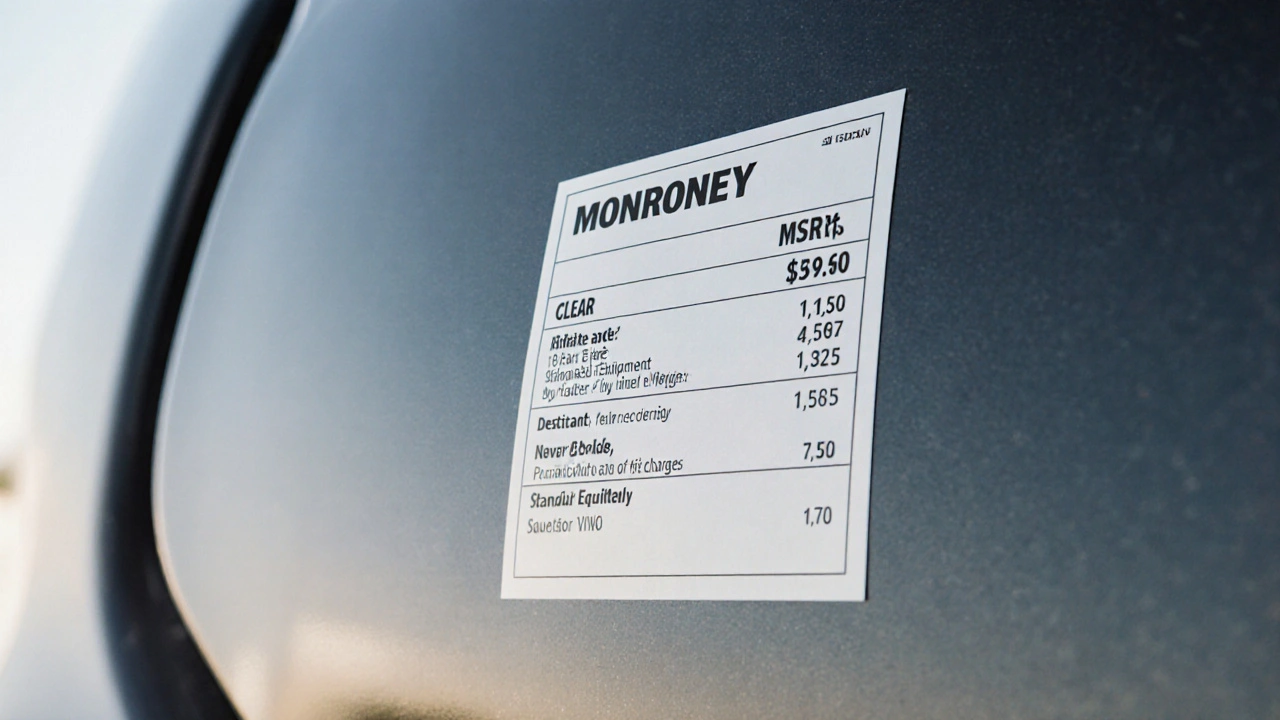When you walk onto a car lot, the vehicle window sticker, a federally mandated label on every new car that shows price, features, fuel economy, and safety ratings. Also known as the Monroney label, it’s the one piece of paper that can save you from overpaying or buying the wrong car. This isn’t just a tag—it’s your legal right to know what you’re getting. Dealers can’t hide fees, trick you with fake options, or lie about fuel ratings. The sticker spells it all out: base price, destination charge, optional packages, and even how much gas you’ll use every year.
Most buyers skip it. They focus on monthly payments, color, or how the seats feel. But the vehicle window sticker is where the real story lives. It tells you if that "premium sound system" is actually worth $1,200 or if the "all-wheel drive" package adds $2,000 to the price. It shows EPA fuel economy numbers—real ones, not the dealer’s hype. And it lists safety ratings from the NHTSA and IIHS, so you know if the car actually protects you in a crash. You’ll also see the manufacturer’s suggested retail price (MSRP), which is your starting point for negotiation. If the dealer says "this is the best deal," check the sticker. Is the final price lower than MSRP? Or did they tack on $895 for "dealer prep" that wasn’t listed?
The sticker doesn’t just help you avoid scams—it helps you compare cars fairly. Want to pick between a Honda CR-V and a Toyota RAV4? Look at both stickers. Which one has better fuel economy? Which has more standard safety features? Which one charges extra for blind-spot monitoring? The sticker gives you the facts, not the sales pitch. And if you’re buying a car with special options—like a sunroof, upgraded wheels, or a towing package—it lists exactly what you’re paying for each one. No guessing. No hidden add-ons.
It’s not just for new cars, either. Even if you’re buying a demo or a leftover 2018 model, the sticker should still be there. If it’s missing, walk away. That’s a red flag. Dealers are required by law to display it. If they can’t produce it, they’re hiding something. And if you’re ever unsure what a term on the sticker means—like "destination charge" or "fuel economy rating"—a quick search will explain it. No jargon needed. Just clear numbers and facts.
What you’ll find below are real posts from people who’ve dug into these stickers, figured out what they mean, and used them to save money, avoid scams, and make smarter choices. Some show how to spot inflated option packages. Others break down exactly what the fuel economy numbers mean in real driving. There are guides on how to use the sticker during negotiation, and even how to verify if a dealer changed the sticker after you signed. This isn’t theory. It’s what people actually did—and what worked.
Posted by
Liana Harrow
14 Comments

Learn how to read a used car's window sticker to verify features, spot lies, negotiate better prices, and avoid overpaying. The Monroney label holds the truth - if you know where to look.
read more